Discover the various cultural and historical features of St. James Park and the area around St. James Cathedral.
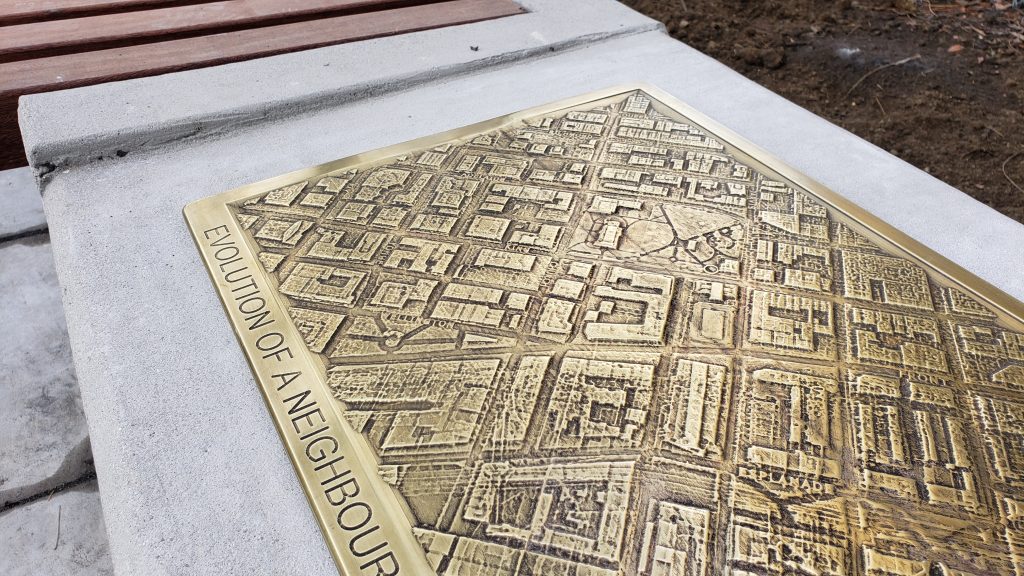
Artwork by Scott Eunson
As part of the park’s revitalization, PMA Landscape Architects approached Toronto-based artist Scott Eunson to create two pieces to reflect the evolution of our neighbourhood—the Old Town—from its earliest days to present time.
“Evolution of a Neighborhood, Layered Maps from 1818 to 2019” (shown on the right) was digitally composed by layering 10 transparent historical maps and aerial photos and shows how the shoreline has changed over the last two centuries. The “Architectural Timeline: St James Cathedral Neighborhood” forms a seat back of the bench near the cathedral and features profiles of nearby buildings, past and present.
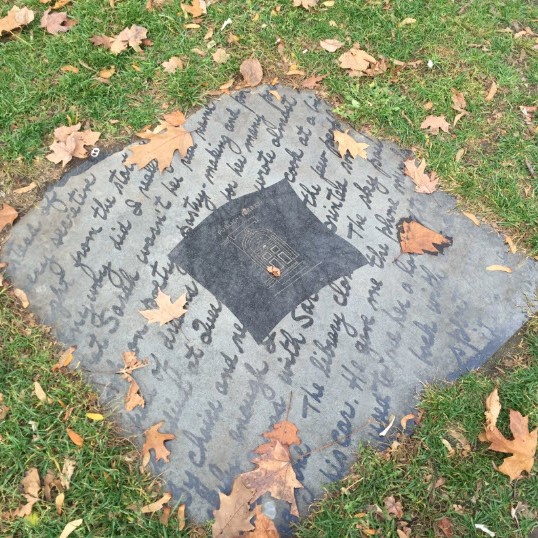
I looked for Sarah everywhere
Look at the grounds of the park and you may notice marble slabs with hand written script. These six tablets are an art installation by Gilbert Boyer called “I looked for Sarah everywhere“. First installed in the Sculpture Garden in 1992, the installation was reassembled in St. James Park in 2001.
Mystery seekers should note that the tablets are organized in a circular formation and appear to be written like a diary that is a puzzle that shares the whereabouts of Sarah, somewhere in the city.
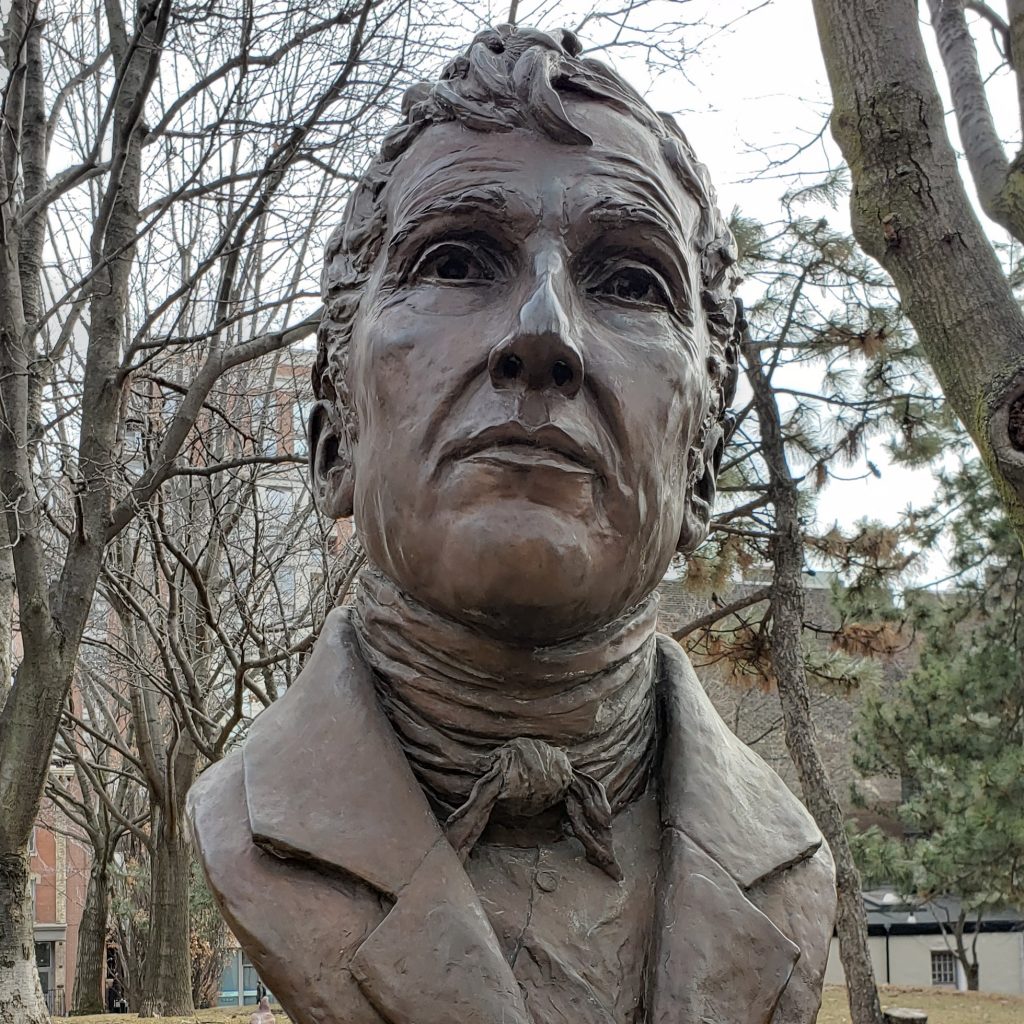
Robert Gourlay bust
The park features a bust of Robert Gourlay, a Scottish-Canadian writer, political reform activist, and agriculturalist. Ahead of his time Gourlay fought for fundamental freedoms in England, Scotland and Canada including the right to vote, the right for a living wage and fair land distribution. The efforts of Gourlay were said to have sown the seeds that lead to the Upper Canada Rebellion in 1837.
Adrienne Alison (1954-2018), the sculptor who created the bust of Robert Gourlay in St. James Park will be remembered for her sculptures commemorating Toronto’s distinguished historic individuals, and her important work in the field of prosthetics.

Francis Collins Heritage Toronto plaque
On the east side of the park along Jarvis Street stands a plaque dedicated to Francis Collins who immigrated from Ireland to Muddy York in 1818. He became a reporter of the lively political debates happening at the time. It became apparent to Collins that it was next to impossible for newcomers, like many of his fellow countrymen who lacked family connections, to gain a successful foothold in the city while the Family Compact controlled all levels of society. He agitated against this injustice in 1825 through a weekly newspaper he started called “The Canadian Freeman”.
He became the target of the Family Compact and was fined and jailed for one year on supped up libel charges for words he wrote against John Beverley Robinson.
After being released from prison, Collins spent hours ministering to Catholic Irish during the cholera epidemic of 1834, when he contracted the illness himself. He died on April 29th, shortly before his daughter and wife who also succumbed. It is believed that he is buried in the unmarked graveyard behind St. Paul’s Basilica.

Horse trough fountain
Situated at south end of the park along King Street is a heritage water fountain. In the 1970s it was in front of St. Lawrence Hall. This particular trough was manufactured by Canada Foundry Co. Ltd in the early 19th century. These drinking fountains were common at major intersections in the city and remained in use as late as the 1940s. The large trough at the front offered fresh water to horses and people could fill a cup from a fountain on the back. With advances of indoor plumbing and concerns of public hygiene many of these troughs were removed.

Northeast plaza entry lighting feature
Designed by PMA Landscape architects, the light feature at the north east plaza is a sculptural abstract interpretation of the St. James Cathedral in silhouette.

Discovery Walks plaque
Learn some history about the park and if you feel like exploring the area take a journey along the Discovery Walks downtown route.

Commemorative trees
A number of commemorative trees around the park are donations from community members on behalf of a loved one or a special event or occasion. To find out how you can donate a commemorative tree visit the City’s website.
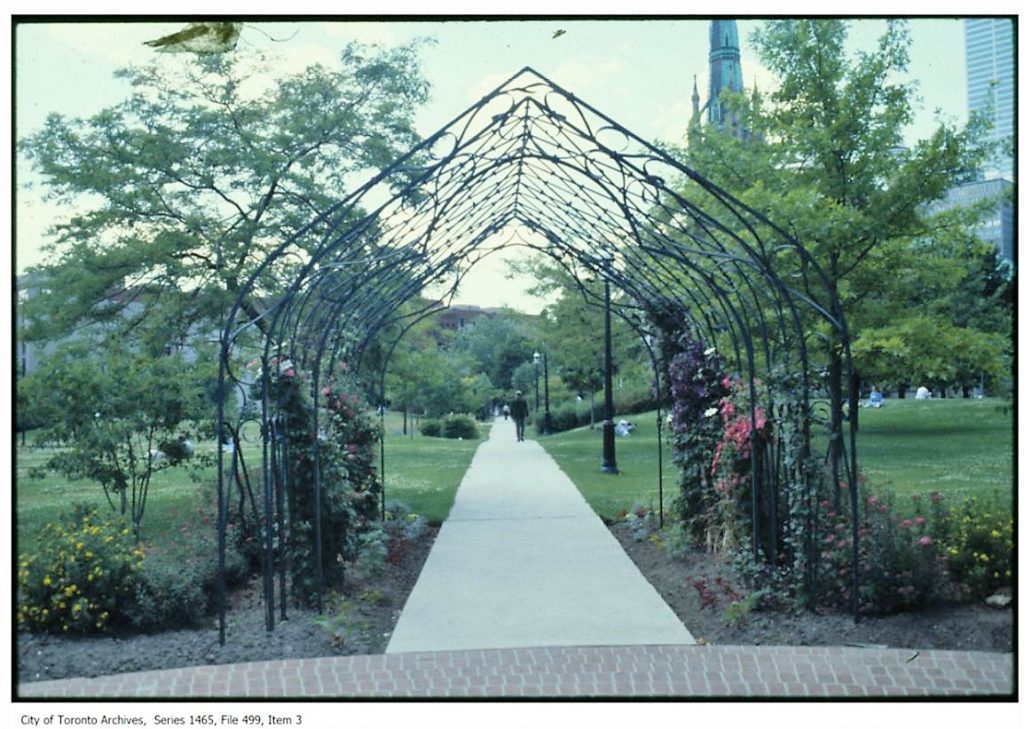
Arbour
The clematis covered wrought-iron arbour at the northeast entry plaza was designed by the city’s Urban Design Group and was added in the early 1980’s when the park was redeveloped.
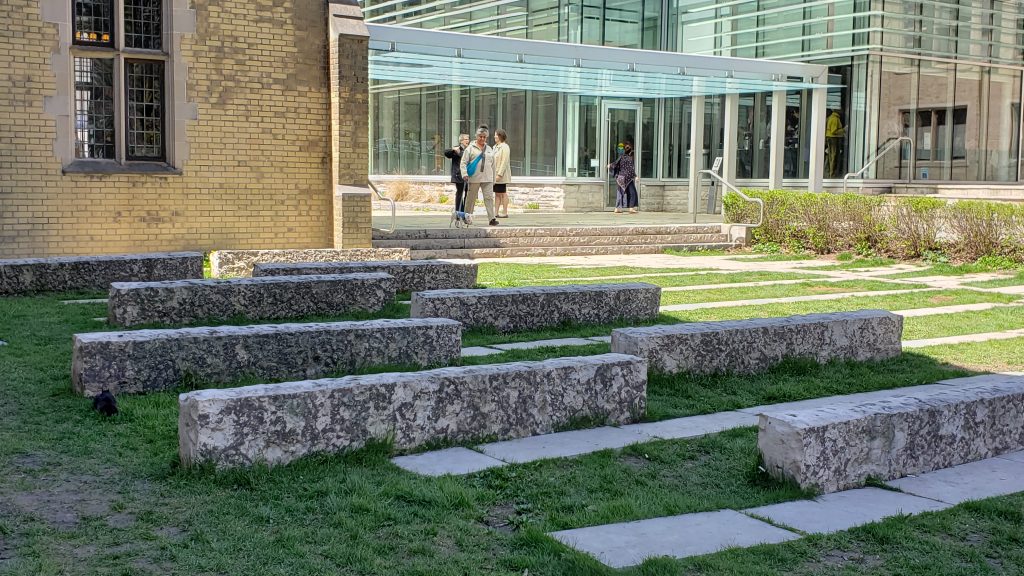
Commemoration of unmarked graves
At the north end of the St. James Cathedral, alternating bands of limestone paving and greenery mark the original proposed footprint of the Cathedral. Together with the tomb-like stone benches, the area commemorates the early Toronto residents who lie beneath in unmarked graves.
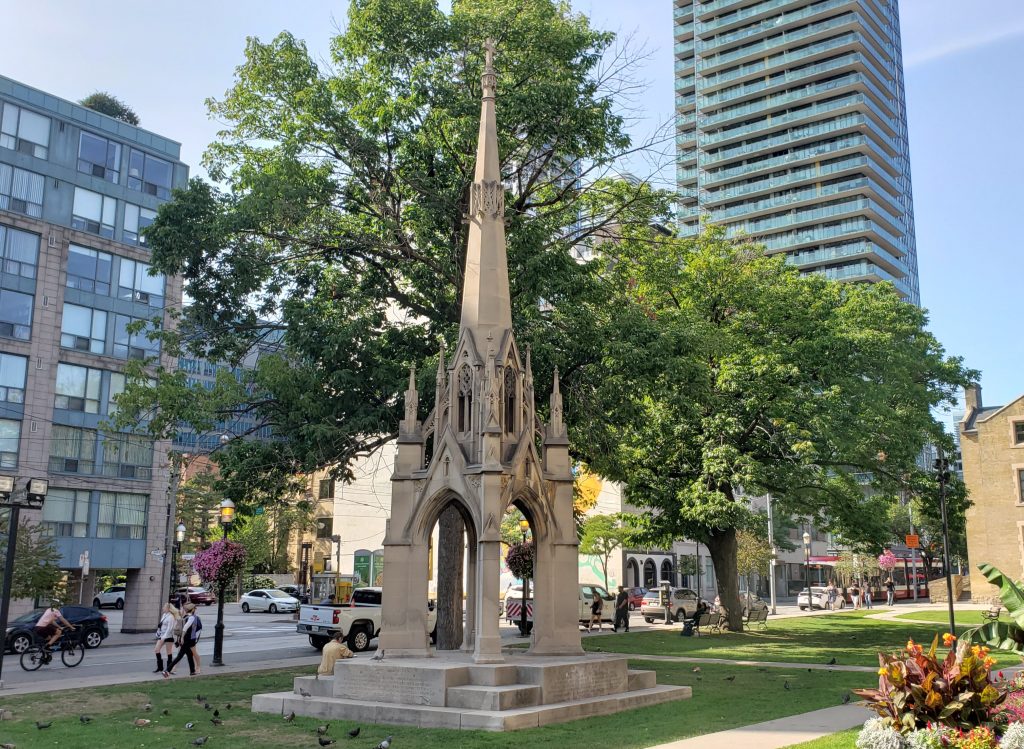
The Memorial Cross
The memorial cross along Church Street honours 48 parishioners of St. James Cathedral who died in the First World War. Built in 1924 and designed by architects Sproatt & Rolph, it is made of Indiana sandstone. It is a popular spot to sit and passersby often lay their poppies there on Remembrance Day.
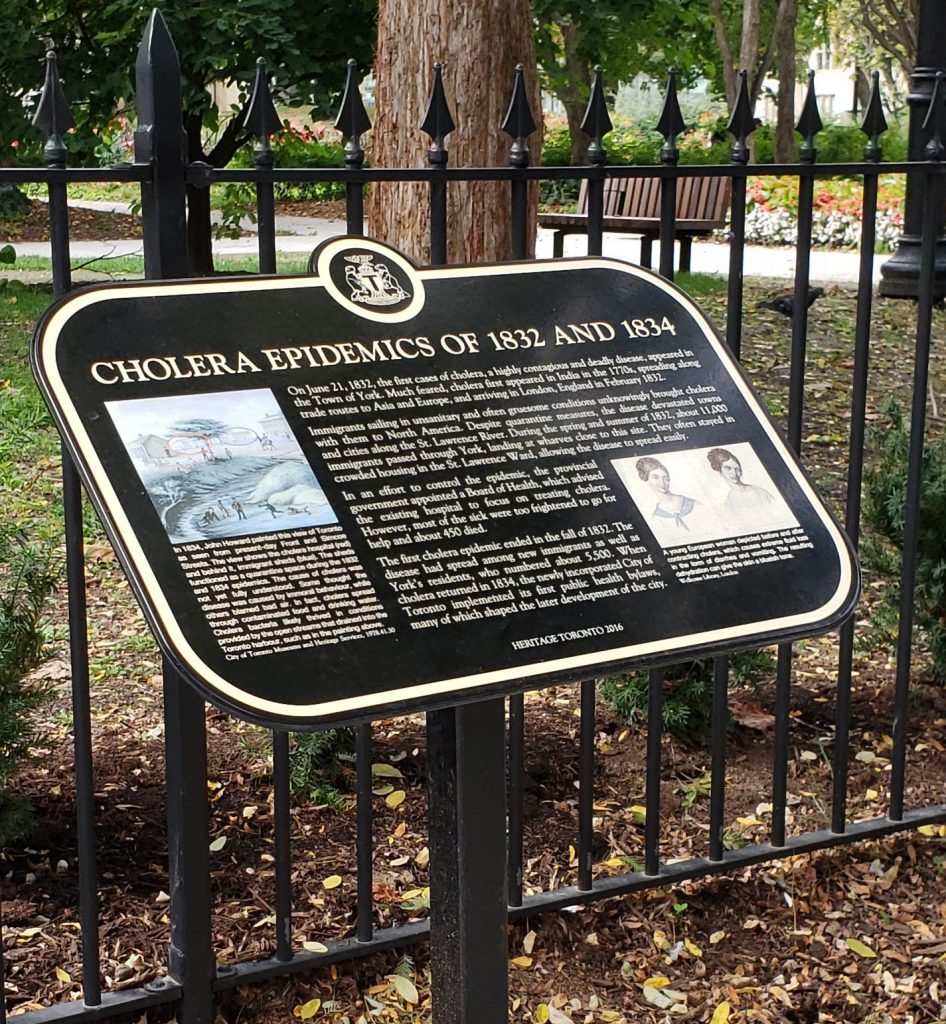
Cholera epidemics of 1832 and 1834
Heritage Toronto Plaque
Installed in the southeast entry plaza in 2020, this Heritage Toronto plaque describes the cholera epidemics that ravaged the young city in the early 19th century. “During the spring and summer of 1832, about 11,000 immigrants passed through York, landing at wharves close to this site. They often stayed in crowded housing in the St. Lawrence Ward, allowing the disease to spread easily.” As people fell sick and died within a short period of time, their bodies were collected by the cholera car at night to be buried in an isolated corner of St. James cemetery.
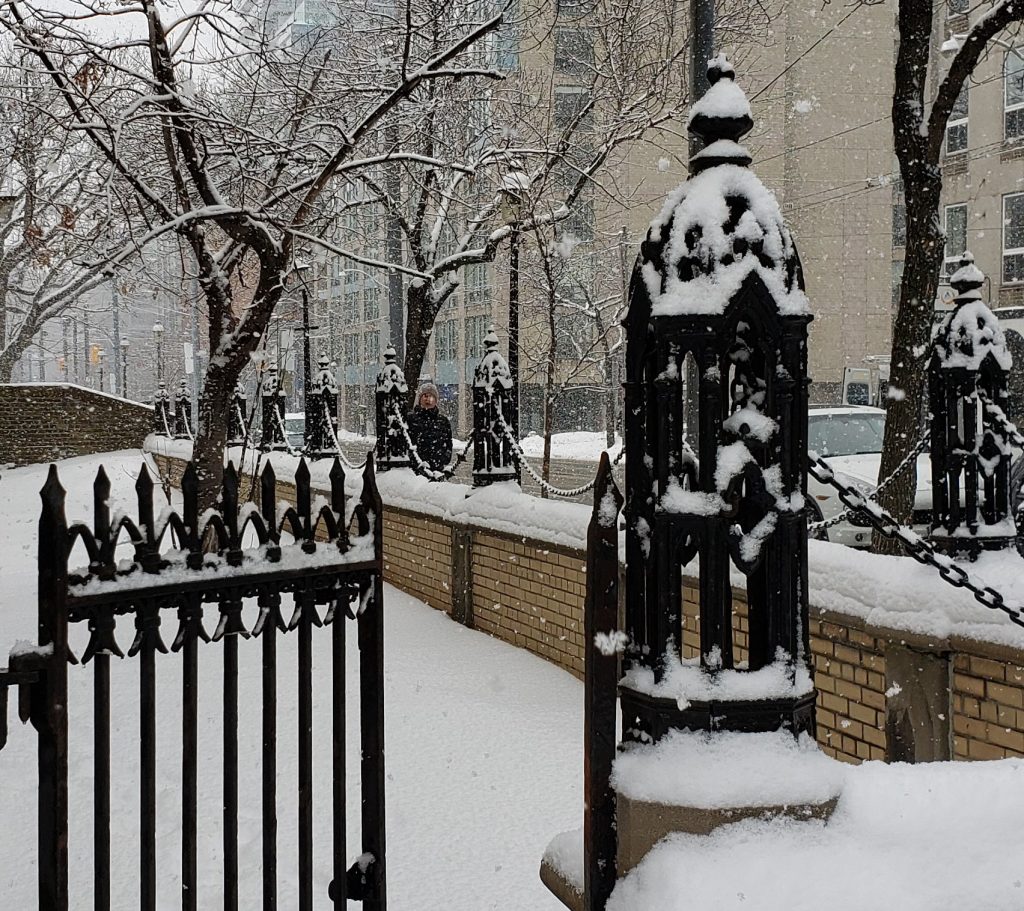
Heritage cast iron fencing
St. James Cathedral was once surrounded by a low brick fence with posts surmounted by miniature towers of ironwork connected by a chain hung with porcupine balls. This ornamentation was designed by Sir Casimir Gzowski. A small section of the original iron finials is incorporated into a recreated brick wall in front of St. James Cathedral Centre along Church Street. Most of the iron was given up for scrap during WWII and the fencing around the church was removed in the 1960s to make the park like property more open to public use.
